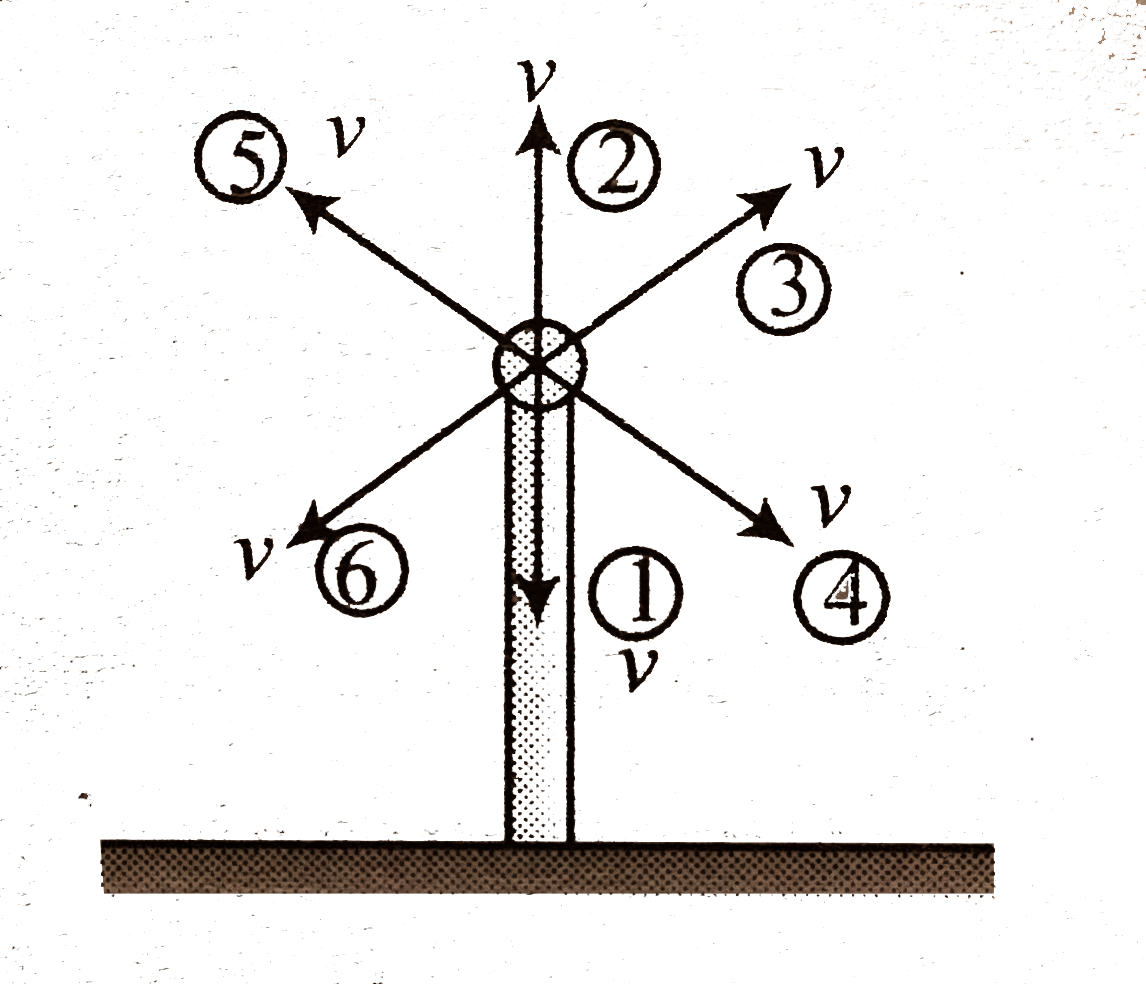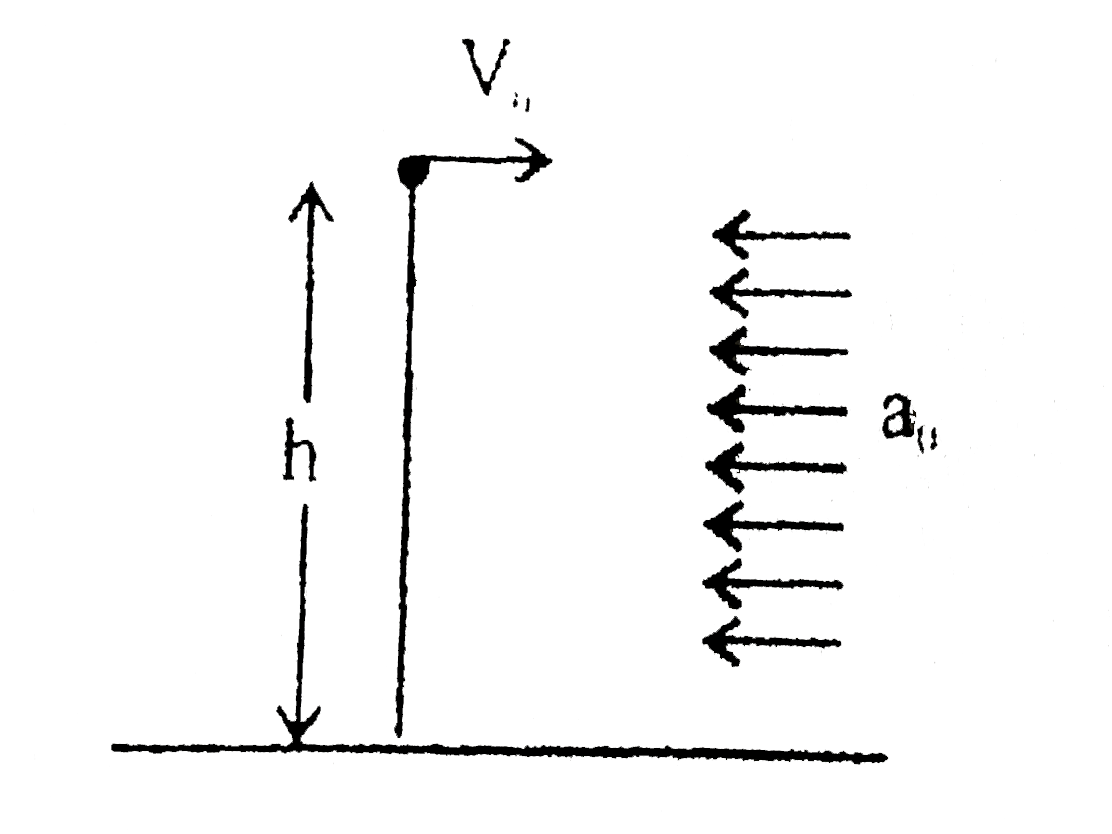Assertion: In projectile motion horizontal velocity remains same but vertical velocity continously change and particle strikes the ground with same vertical velocity with which the particle was thrwon in vertical direction. Solution in Gujrati
If both assertion & Reason are True & the Reason is a corrrect explanation of the Asserion.
If both Assertion & Reason are True but Reason is not correct explanation of the Assertion.
If Assertion is Trie but the Reason is False.
If both Assertion & Reason are false
The correct Answer is:D
Step by step video & image solution for Assertion: In projectile motion horizontal velocity remains same but vertical velocity continously change and particle strikes the ground with same vertical velocity with which the particle was thrwon in vertical direction. by Physics experts to help you in doubts & scoring excellent marks in Class 12 exams.
Updated on:21/07/2023Topper's Solved these Questions
- MOTION IN A PALNEBOOK - ALLEN CHAPTER - MOTION IN A PALNEEXERCISE - SOLVED EXAMPLE
28 Videos
- MOTION IN A PALNEBOOK - ALLEN CHAPTER - MOTION IN A PALNEEXERCISE - EXERCISE-2
170 Videos
- KINEMATICS-2DBOOK - ALLEN CHAPTER - KINEMATICS-2DEXERCISE - Exercise (O-2)
47 Videos
- NEWTON'S LAWS OF MOTION & FRICTIONBOOK - ALLEN CHAPTER - NEWTON'S LAWS OF MOTION & FRICTIONEXERCISE - EXERCISE (JA)
4 Videos
Similar Questions
A particle thrown over a triangle from one end of a horizontal base falls on the other end of the base after grazing the vertex. If αandβ are the base angles of triangle and angle of projection is θ, then prove that (tanθ=tanα+tanβ)
View SolutionThe velocity of a particle moving with constant acceleration at an instant t0 is 10m/s After 5 seconds of that instant the velocity of the particle is 20m/s. The velocity at 3 second before t0 is:-
View SolutionA particle is moving in xy-plane .At certain instant the components of its velocity and acceleration are as follows ux=3m/s,uy=4m/s,ax=2m/s2anday=1m/s2. The rate of change of speed at this moment is
View SolutionA piece of wire is bent in the shape of a parabola y=kx2 (y-axis vertical) with a bead of mass m on it. The bead can slide on the wire without friction. It stays at the lowest point of the parabola when the wire is at rest. The wire is now accelerated parallel to the x-axis with a constant acceleration a. The distance of the new equilibrium position of the bead, where the bead can stay at rest with respect to the wire, from the y-axis is:
View SolutionAll the particles thrown with same initial velocity would strike the ground.
 .
.
View SolutionProjectile motion is a combination of two one-dimensional motion: one in horizontal and other in vertical direction. Motion in 2D means in a plane. Necessary condition for 2D motion is that the velocity vector is coplanar to the acceleration vector. In case of projectile motion, the angle between velocity and acceleration will be 0^@ltthetalt180^@ . During the projectile motion, the horizontal component of velocity ramains unchanged but the vertical component of velocity is time dependent. Now answer the following questions: A particle is projected from the origin in the x-y plane. The acceleration of particle in negative y-direction is alpha . If equation of path of the particle is y = ax - bx^2 , then initial velocity of the particle is
View SolutionSTATEMENT-1: A particle si projected at an angle θ(<90) to horizontal, with a velcotiy u. When particle strikes the ground its speed is again u.
STATEMENT-2: Velocity along horizontal direction remains same but velocity along vertical direction is changed. When particle strikes the ground, magnitude of final vertical velocity is equal to magnitude of initla vertical velocity.
View SolutionA particle is projected horizontally from a tower with velocity V0. Wind is blowing in opposite direction and is providing a constant horizontal acceleration a0. If particle strikes the ground vertically then height of building is

View SolutionAssertion: In projectile motion, the vertical velocity of the particle is continoulsy decreased during its ascending motion.
Reason: In projectile motion downward constant acceleration is present in vertical direction.
View SolutionA particle is projected from the ground so as to graze the four upper vertices of a regular hexagor, whose side is 2a and which is placed vertically with one side on the ground. What is the ratio of the velocity of the particle on reaching the ground to the least velocity?
View SolutionA particle is projected vertically upwards with a velocity v. It returns to the ground in time T. Which of the following graphs correctly represents the motion.
View Solutionयदि समान वेग से समान समरूप चुम्बकीय क्षेत्र के कणों को लम्बवत प्रक्षेपित किया जाता है, तो निम्न में से किस कण पर सर्वाधिक चुम्बकीय बल लगेगा ?
View Solutionप्रक्षेप्य गति में वस्तु के वेग के ऊर्ध्वाधर घटक और क्षैतिज घटक दोनों और नियत होता है |
View SolutionA particle is moving in a circular path of radius r with constant speed. Due to change in the direction of motion of the particle continously, the velocity of the particle is changing . But the kinetic energy of the particle remains the same. Explain why ?
View Solutionएक कण ऊर्ध्वाधर ऊपर की ओर प्रारम्भिक वेग u से फेंका जाता है। T सैकण्ड के अन्तराल के बाद एक अन्य कण उतने ही वेग u से ऊर्ध्वाधर ऊपर की ओर फेंका जाता है, तो
View Solutionकथन : प्रक्षेप्य गति में प्रक्षेप्य धरातल पर उसी वेग से टकराता है जिससे इसको प्रक्षेपित किया जाता है।
कारण : परवलय गति में क्षैतिज वेग सदैव अचर रहता है और उर्ध्वाधर वेग निरन्तर परिवर्तित होता रहता है। किन्तु प्रक्षेपित कण धरातल पर उतने ही उर्ध्वाधर वेग से टकराता है जितने उर्ध्वाधर वेग से कण को फैंका जाता है।
View Solution
